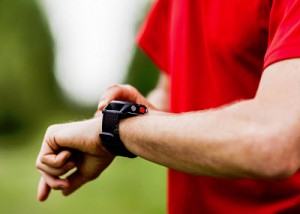A new tech from Purdue U. and Indiana University School of Medicine will guide docs with AR instructions.
Scientists working together at Purdue University and the Indiana University School of Medicine have come up with a new augmented reality based technology designed to assist military surgeons to complete vital procedures on the battlefield.
The tech will offer them guidance through both visual and audio assistance from remote specialists.
The idea is to use more than just verbal instructions when these military surgeons are coping with challenging trauma cases. While there are already systems in existence that give physicians located far away the ability to mark up video that is sent to him or her from a surgeon who is already working on a patient, there are some drawbacks to the current method. For example, though the video is from the perspective of the surgeon actually conducting the procedure, the notes from the assisting remote surgeon are displayed on a monitor nearby. This requires the surgeon to continually look away from the patient and the screen where the instructions are being shown. This new augmented reality based technology could change that.
The System for Telementoring with Augmented Reality (STAR) displays the information before the surgeon’s eyes.
It provides more than notes made on a video screen. Instead, it offers a more natural way of sharing information between two doctors who are on different parts of the planet. This allows them to use the overlay of AR technology to display notes or indicate specific positions on the patient that indicates particular points on the anatomy so that the surgeon is seeing it over his or her reality instead of on a screen.
This augmented reality technology offers a few different visual recognition algorithms in order to make sure that the text remains stable above the applicable locations, even if the surgeon changes his or her view away from the field of view where the text applies. This system uses transparent overlay on top of the working field so that a remote surgeon can point things out and add text right in front of the surgeon’s eyes without ever requiring the surgeon to look away from what he or she is doing.

 At the moment, research that has been conducted on the devices to show that they actually work in terms of the feedback that they provide (such as counting steps, calories burned, distance traveled, etc) is very limited. It has been conducted on small numbers or on specific groups of people, so far. There isn’t yet any reliable data with regards to use by the general population.
At the moment, research that has been conducted on the devices to show that they actually work in terms of the feedback that they provide (such as counting steps, calories burned, distance traveled, etc) is very limited. It has been conducted on small numbers or on specific groups of people, so far. There isn’t yet any reliable data with regards to use by the general population.